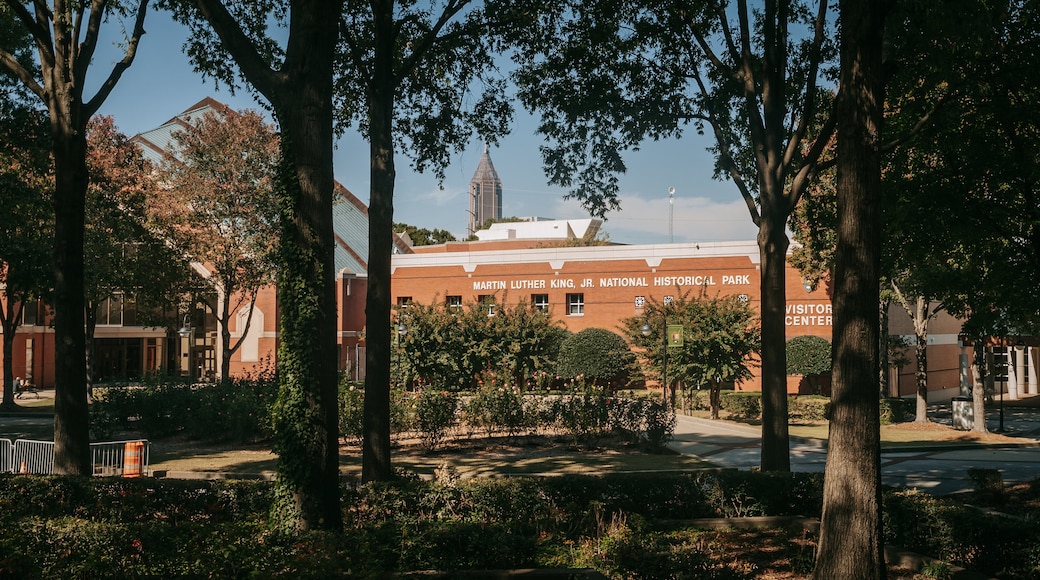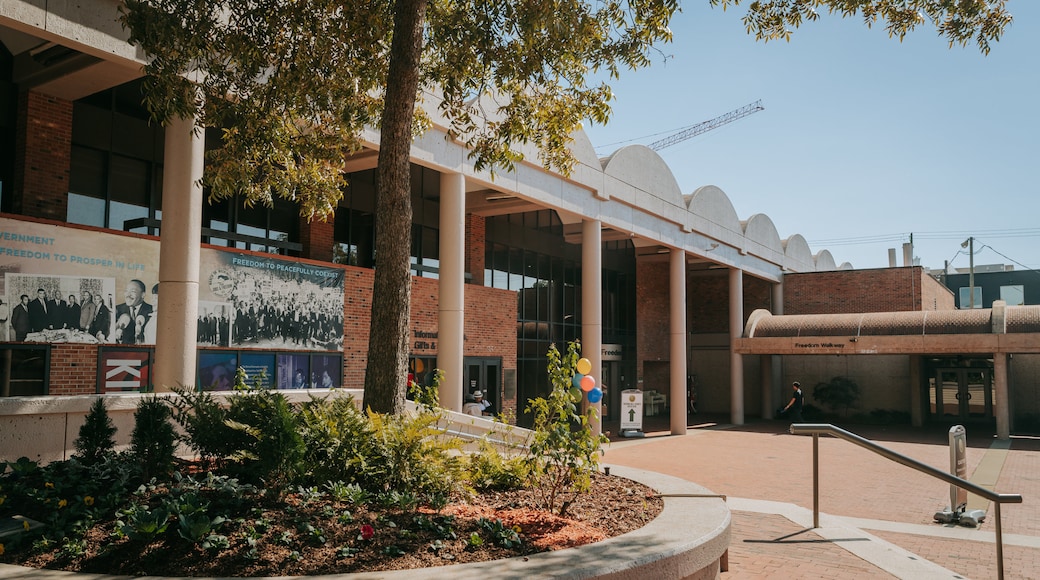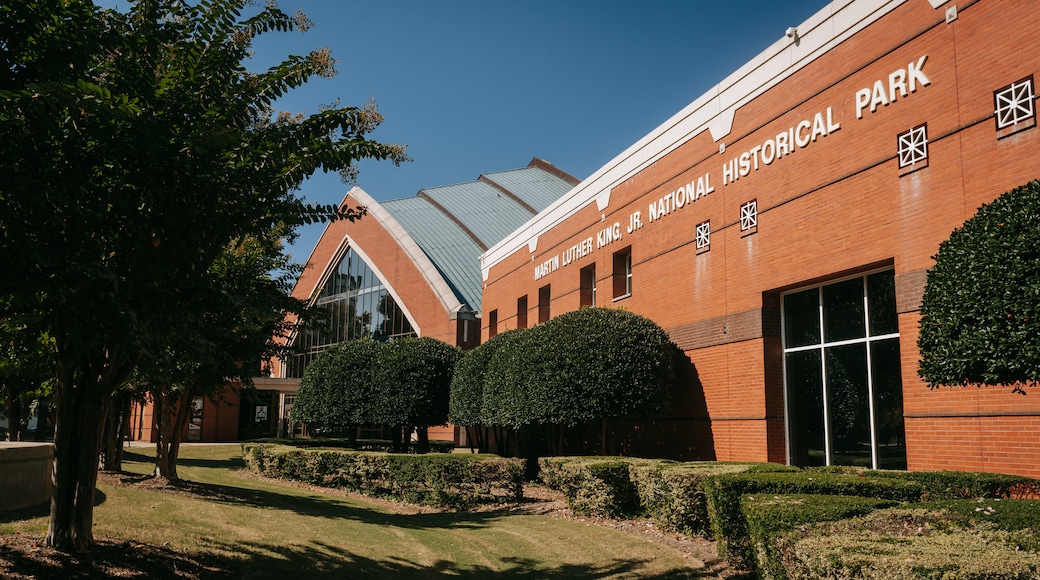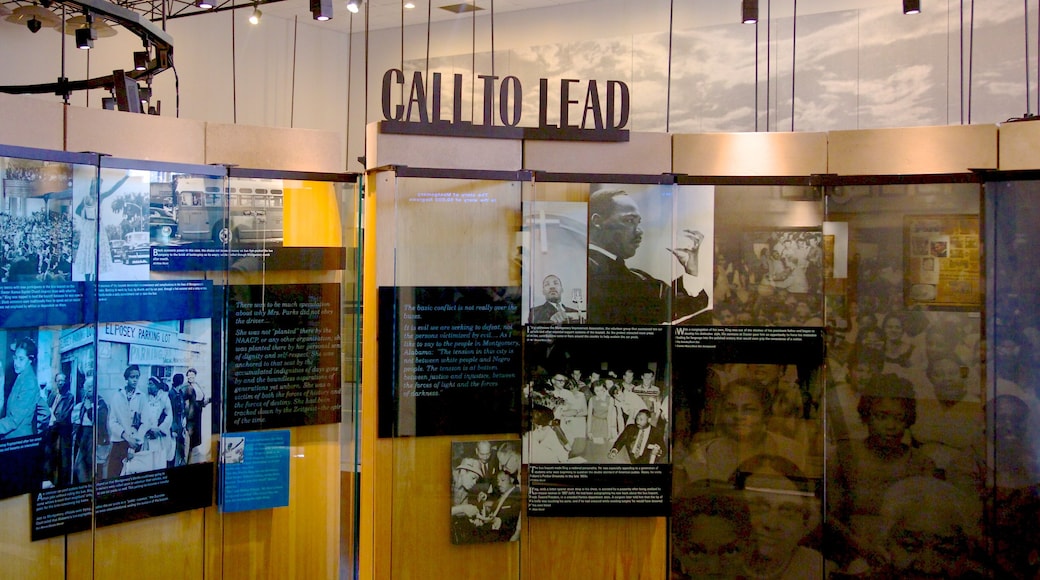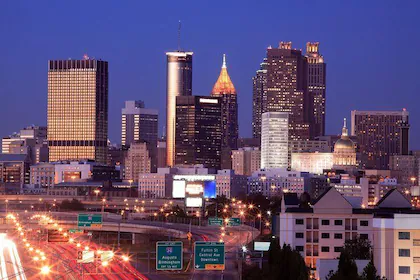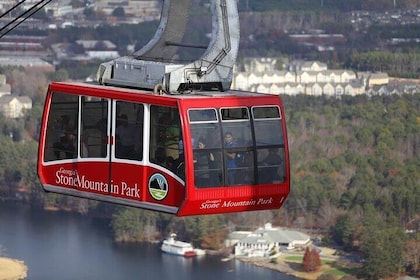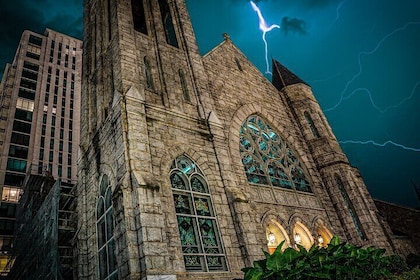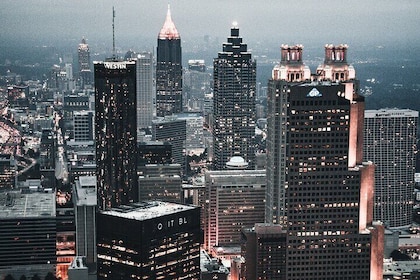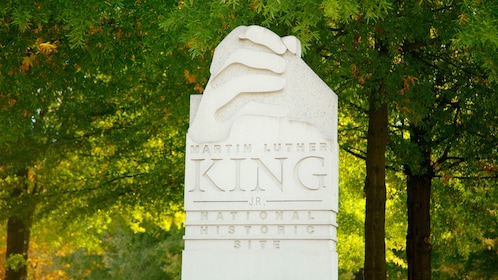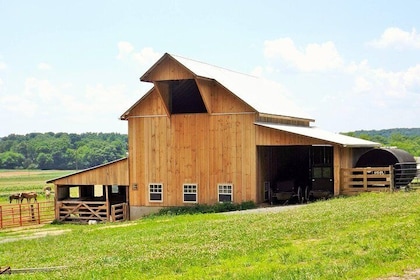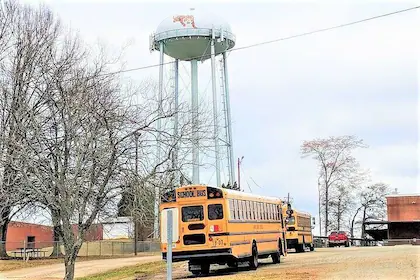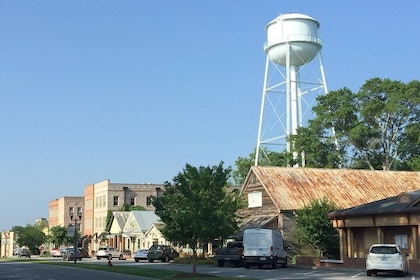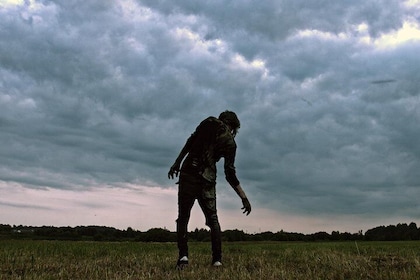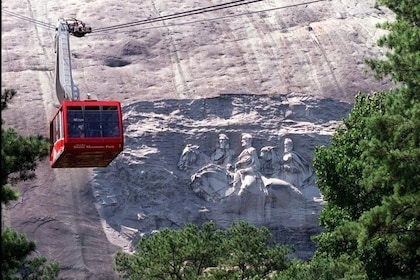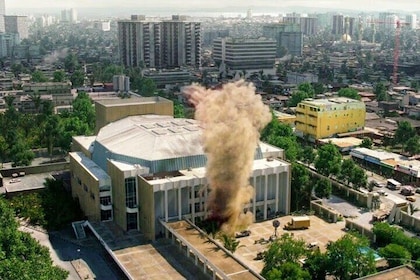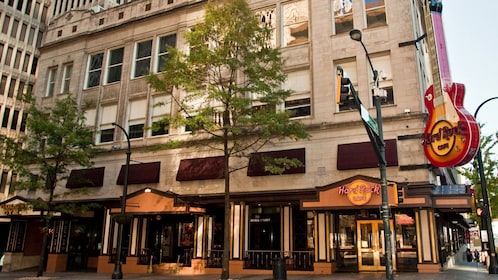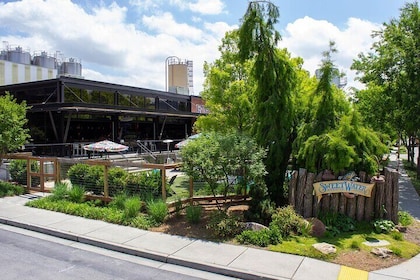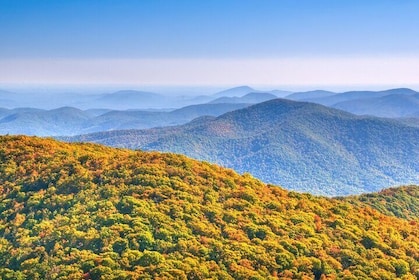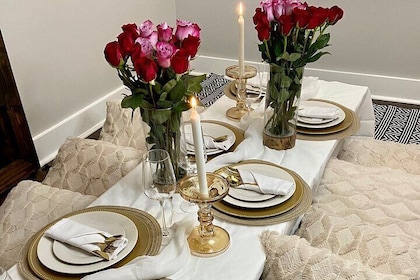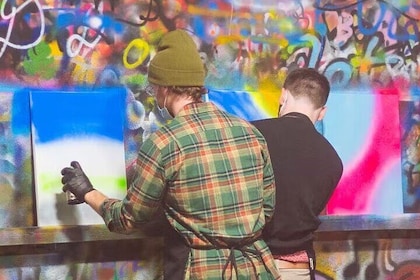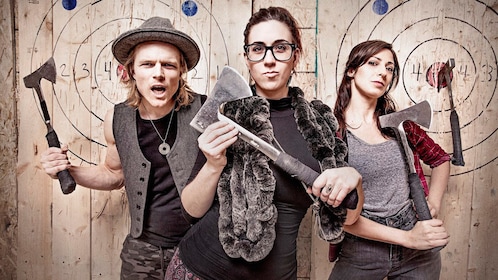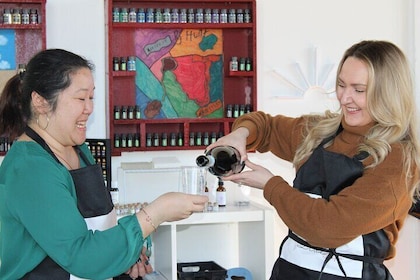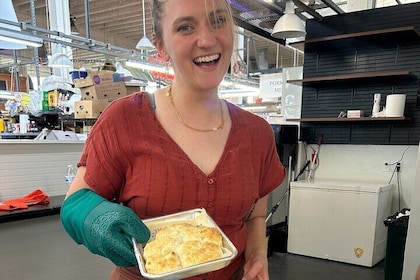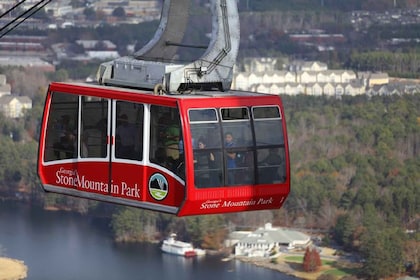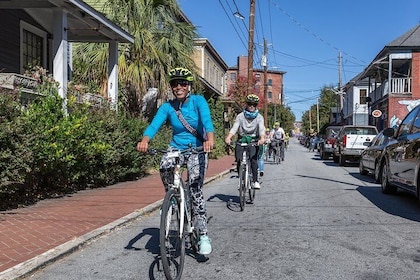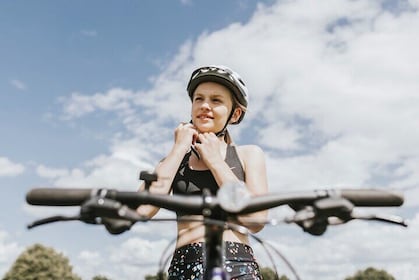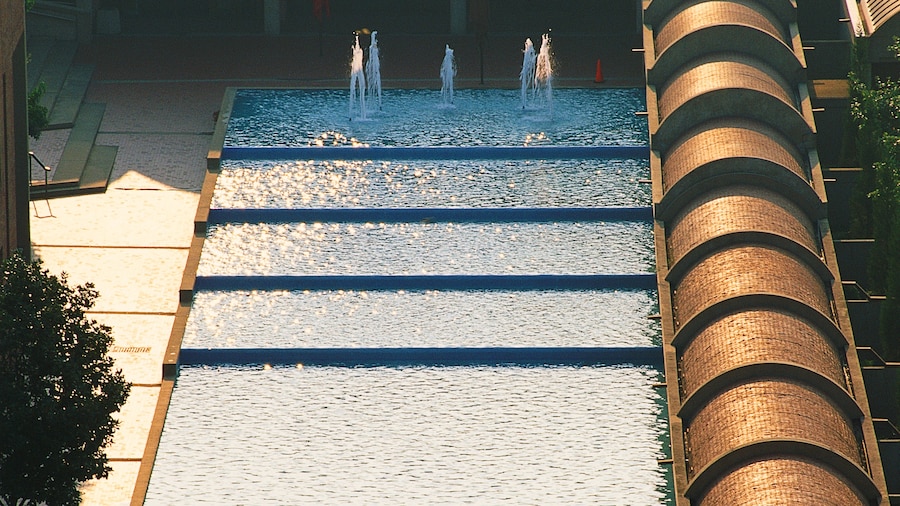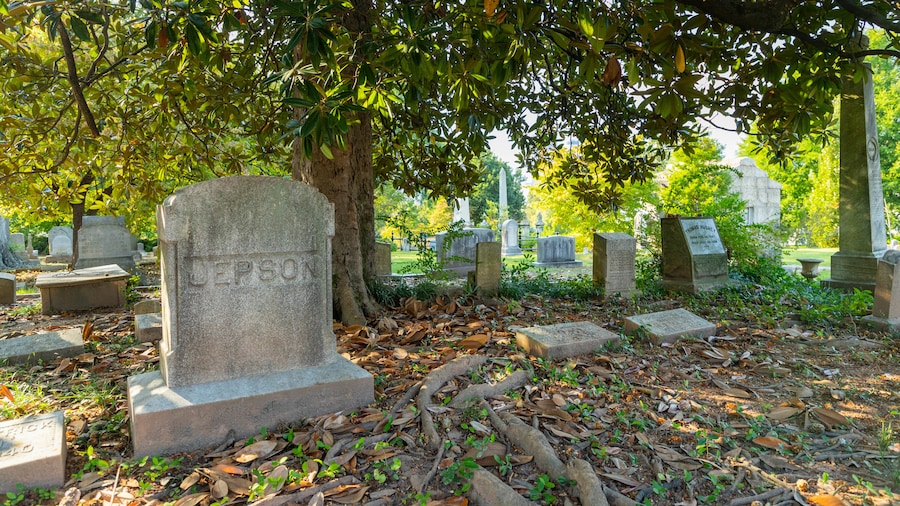See where this Nobel Peace Prize laureate was born, stand in the church where he preached, and read about his life and work.
The Martin Luther King Junior National Historic Site is a celebration of one of the most important figures in U.S. history. The 35-acre (14-hectare) area in Atlanta’s Sweet Auburn Historic District preserves the buildings where King lived and worked. Go for a tour through the house where he was born in 1929, wander through the Ebenezer Baptist Church where he began his career and see his final resting place.
Start your tour at the Visitor’s Center to pick up a map. There’s an informative exhibit that provides an overview of King’s life and the evolution of the Civil Rights Movement. A second exhibit aimed at younger visitors tells the story of children involved in the Civil Rights Movement. Entry to the site and its museums is free.
At the Visitor’s Center, sign up for a guided tour of King’s birth home. Tours are every half hour June through August and every hour the rest of the year. Places are limited, so get there early to secure a spot. The house was built in 1895, and King’s family lived there from 1926 until 1941. It has largely been restored to how it looked during that time, including the bedrooms, kitchen, study and dining room.
The family lived just down the road from the Ebenezer Baptist Church, the place where King was baptized as a child and later preached with his father. It’s inspiring to listen to recordings of his rousing sermons here.
King’s remains are in a tomb just outside The King Center. The center houses some of his personal belongings and an exhibition dedicated to non-violent social activists. You can also read about his wife, Coretta, and Mahatma Gandhi.
It’s both inspiring and sobering to stroll through a rose garden dedicated to world peace and take the Civil Rights Walk of Fame. Famous inductees include Rosa Parks and Stevie Wonder.
The National Historic Site is open seven days a week, closed on Thanksgiving, Christmas and New Year’s.
The area around the historic site is a Preservation District, and many 19th- and early 20th-century houses remain well-kept and occupied. The pretty tree-lined streets and old brick buildings offer many photo opportunities.

